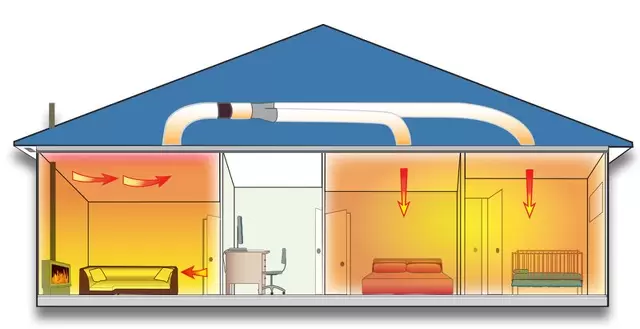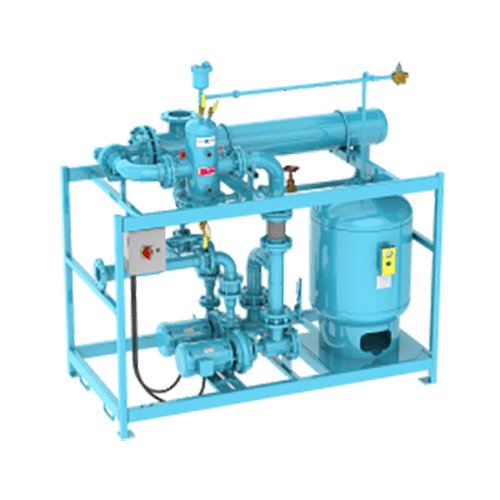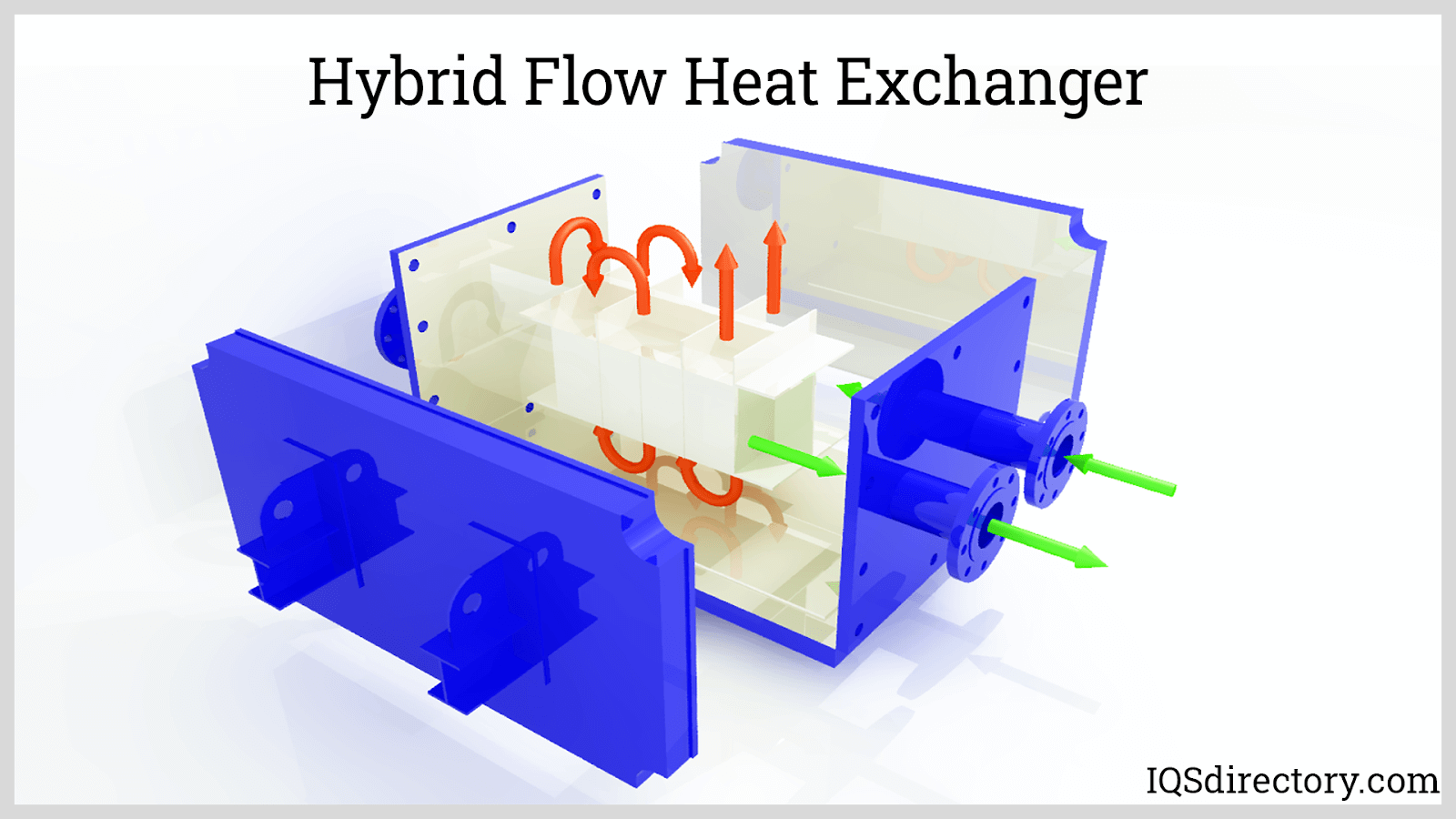Exploring Advanced CFD Modeling in DVS Heat Transfer Systems
Wiki Article
Developments in Heat Transfer Systems: What You Need to Know for Optimum Performance
Innovations in Heat transfer systems are transforming efficiency throughout various sectors. Advanced materials like graphene and nanofluids guarantee considerable renovations in thermal conductivity. The assimilation of IoT and device understanding uses opportunities for real-time monitoring and improved power efficiency. However, the landscape of thermal administration is quickly progressing (DVS Heat Transfer Systems). Understanding these advancements is vital for attaining optimal system efficiency and sustainability in the future. What details advancements are forming this improvement?Arising Products for Enhanced Heat Transfer

Advanced Heat Exchanger Designs
While traditional Heat exchangers have offered their objective in numerous applications, progressed styles are currently arising to fulfill the boosting demands for performance and efficiency. These ingenious layouts, such as plate, shell-and-tube, and finned-tube Heat exchangers, include boosted surface area locations and enhanced circulation patterns to increase thermal transfer rates. Furthermore, compact layouts permit lowered space requirements without endangering effectiveness. Advanced products, such as composites and corrosion-resistant alloys, in addition enhance sturdiness and performance under extreme conditions. Simulation technologies and computational liquid dynamics are progressively employed to refine these layouts, guaranteeing peak Heat transfer features. As sectors look for to reduce power consumption and make the most of output, the fostering of advanced Heat exchanger styles is pivotal in attaining these objectives.The Role of Nanotechnology in Heat Transfer
Nanotechnology plays an essential role in enhancing thermal conductivity within Heat transfer systems. By controling products at the nanoscale, researchers have actually accomplished significant enhancements in power efficiency. These improvements not just maximize performance but additionally add to more lasting power remedies.Boosted Thermal Conductivity
Significant improvements in thermal conductivity have actually arised with the application of nanotechnology, reinventing Heat transfer systems across different markets. By incorporating nanoparticles right into Heat transfer fluids and materials, researchers have actually achieved amazing boosts in thermal conductivity. These nanoparticles, such as carbon nanotubes, graphene, and metal oxides, enhance the Heat transfer homes as a result of their high surface area and special thermal features. The resulting composites show enhanced performance in applications ranging from electronics cooling systems to renewable resource modern technologies. Moreover, the ability to tailor the dimension, shape, and structure of nanoparticles enables maximized thermal administration options. As a result, nanotechnology continues to play a pivotal role in the development of much more effective and effective Heat transfer systems, leading the way for enhanced commercial applications.
Power Performance Improvements

Combination of IoT in Heat Transfer Systems
The assimilation of IoT in Heat transfer systems introduces the execution of clever sensing units that improve functional effectiveness. These sensors enable real-time information surveillance, enabling immediate helpful hints adjustments and optimizations. This technological innovation has the prospective to considerably boost efficiency and energy management in Heat transfer applications.Smart Sensors Application
As Heat transfer systems develop, the combination of clever sensing units via the Internet of Things (IoT) has emerged as a transformative method. These sensing units enable real-time surveillance of stress, temperature level, and flow rates, enhancing system effectiveness and reliability. By collecting and transferring data, they promote aggressive maintenance, minimizing the risk of system failings. Additionally, clever sensors add to power financial savings by refining functional criteria based upon environmental problems. Their capacity to evaluate anomalies and fads allows for educated decision-making, making certain peak performance of Heat transfer systems. As industries significantly adopt this modern technology, the execution of wise sensing units stands to reinvent exactly how Heat transfer systems are managed, leading the way for higher sustainability and boosted efficiency results.Real-Time Data Surveillance
How can real-time information checking improve the performance of Heat transfer systems? By incorporating Net of Things (IoT) modern technology, Heat transfer systems can leverage continual information collection from wise sensors. This real-time surveillance allows for immediate evaluation of temperature, circulation, and stress rates, making it possible for drivers to recognize inefficiencies promptly. Subsequently, modifications can be made to enhance efficiency, decrease energy intake, and extend devices life-span. Additionally, anticipating upkeep can be carried out, reducing unforeseen downtime and costly repairs. The capacity to envision performance metrics via control panels boosts decision-making, cultivating a positive approach to system administration. Eventually, real-time data keeping track of not just enhances operational effectiveness yet also contributes to sustainability objectives within industrial procedures.Energy Effectiveness and Sustainability Trends
Energy effectiveness and sustainability trends are improving the landscape of Heat transfer systems, driving technology and compliance throughout various markets. Organizations are significantly focusing on energy-efficient designs to minimize functional costs and decrease ecological influences. The combination of renewable resource resources is coming to be much more common, enabling Heat transfer systems to operate sustainably while satisfying regulative needs. Additionally, improvements in products and modern technologies promote reduced power consumption and enhance overall efficiency. Lifecycle assessments are additionally gaining traction, permitting companies to examine the ecological effect of Heat transfer systems from production to disposal. This emphasis on sustainability not only supports company responsibility however also settings organizations competitively in a market where customers progressively prefer environment-friendly solutions. As a result, power performance and sustainability stay important useful content factors to consider for future growths in Heat transfer innovation.Technologies in Thermal Administration Solutions
While the need for efficient Heat transfer proceeds to increase, developments in thermal administration services are emerging to resolve both performance and sustainability challenges. Advanced products, such as stage adjustment products and nanofluids, are being established to improve Heat transfer efficiency - DVS Heat Transfer Systems. These products enhance thermal conductivity and enable better temperature level guideline in numerous applications. Additionally, innovations like active thermal control systems are gaining grip, allowing real-time adjustments to manage Heat flow properly. These systems add to energy savings and lower the environmental impact of thermal procedures. In addition, the integration of IoT in thermal management promotes tracking and predictive maintenance, making sure optimized efficiency and long life of Heat transfer systems. Overall, these advancements stand for considerable strides toward more lasting thermal monitoring practicesFuture Instructions in Heat Transfer Technology
Arising innovations in thermal monitoring options signal an encouraging future for Heat transfer modern technology. Researchers are progressively focusing on creating materials with superior thermal conductivity and enhanced energy effectiveness. Developments such as nanofluids, which include suspended nanoparticles, use substantial improvements in Heat transfer efficiency. Furthermore, the integration of wise materials that adapt to varying temperature problems is getting traction, enabling even more effective and receptive systems. The surge of additive manufacturing strategies is likewise enabling the design of complex Heat exchanger geometries that optimize liquid circulation. The implementation of machine discovering formulas is prepared for to revolutionize the optimization of Heat transfer systems, helping with predictive upkeep and efficiency enhancement. Jointly, these developments are poised to transform the landscape of Heat transfer technologies in various markets.
Often Asked Questions

How Do I Select the Right Heat Transfer System for My Application?
Picking the right Heat transfer system includes examining application demands, consisting of temperature level varieties, liquid homes, and effectiveness demands. Examining system types, maintenance factors to consider, and cost-effectiveness likewise plays a crucial role in making an informed decision.What Are the Upkeep Needs for Advanced Heat Exchangers?
Upkeep needs for sophisticated Heat exchangers typically include regular assessments, monitoring for leakages, cleansing of surfaces, and guaranteeing optimal flow prices. Sticking to producer standards warranties efficient procedure and lengthens the tools's life expectancy.
How Do Ecological Factors Affect Heat Transfer Effectiveness?
Environmental elements significantly influence Heat transfer effectiveness. Variations in air movement, temperature, and humidity impact thermal conductivity and convective Heat transfer, inevitably affecting system performance and demanding factor to consider during the design and procedure of Heat transfer systems.What Safety Criteria Put On Heat Transfer Equipments?
Safety and security standards for Heat transfer systems generally include guidelines from companies such as ASME and ASTM. DVS Heat Transfer Systems. These requirements address materials, design, and operational practices to ensure integrity, efficiency, and security against dangers in numerous applications
Just How Can I Repair Common Heat Transfer System Issues?
Troubleshooting typical Heat transfer system problems involves inspecting for leaks, making sure correct fluid flow, checking insulation stability, and validating temperature differentials. Recognizing these variables can aid keep system efficiency and avoid more difficulties.Nanotechnology plays a necessary role in boosting thermal conductivity within Heat transfer systems. web Considerable innovations in thermal conductivity have arised via the application of nanotechnology, reinventing Heat transfer systems across different markets. Advancements in thermal conductivity via nanotechnology have paved the way for amazing improvements in energy effectiveness within Heat transfer systems. Power effectiveness and sustainability trends are reshaping the landscape of Heat transfer systems, driving innovation and compliance throughout numerous industries. The assimilation of IoT in thermal monitoring assists in monitoring and anticipating upkeep, making certain optimized performance and long life of Heat transfer systems.
Report this wiki page